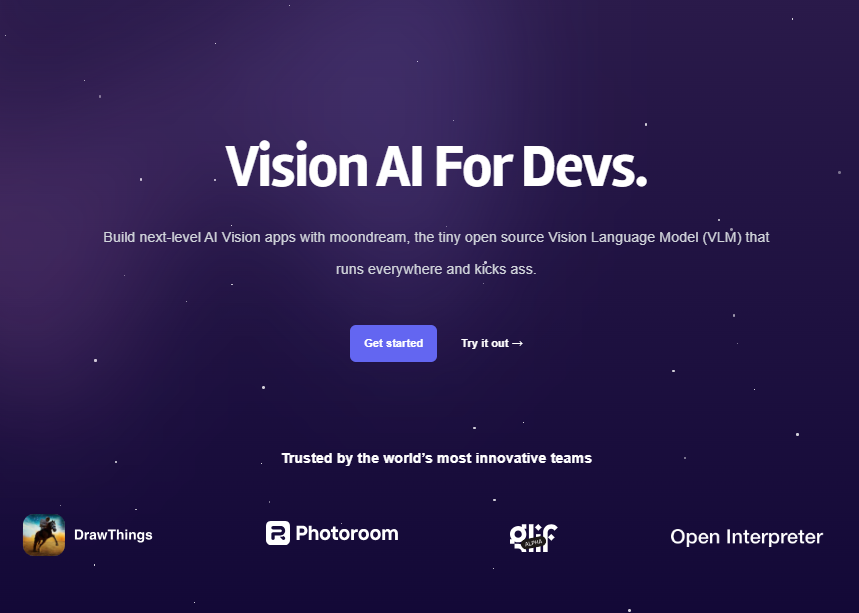The editor of Downcodes learned that AI startup Moondream recently announced the completion of a $4.5 million seed round of financing and launched a disruptive concept: small AI models may have more advantages. This round of financing was co-invested by Felicis Ventures, Microsoft M12, GitHub Fund and Ascend. The visual language model developed by Moondream only has 1.6 billion parameters, but its performance is comparable to that of models four times its size, which has attracted widespread attention in the industry.
AI startup Moondream officially announced the completion of $4.5 million in seed financing and proposed a rather disruptive point of view: In the world of AI models, small models may have an advantage.
The company, which is backed by Felicis Ventures, Microsoft's M12 GitHub fund, and Ascend, has launched a visual language model with just 1.6 billion parameters that rivals models four times its size in performance.

Moondream's open source model has attracted widespread attention, with more than 2 million downloads and 5,100 stars on GitHub. Jay Allen, the company's CEO, said: "What's special about this model is that not only is it small and highly accurate, it also runs very smoothly and can even be used on mobile devices, such as iOS."
Moondream is solving the growing cloud cost and privacy concerns in enterprise AI adoption. The model allows AI to run locally on devices ranging from smartphones to industrial equipment. "As AI gradually penetrates into more and more applications, we hope to protect our privacy while enjoying the convenience brought by AI." Allen said.
Moondream’s technology has already seen initial applications in areas such as automated inventory management in the retail industry, vehicle inspections in the transportation industry, and local quality control in manufacturing facilities. Recent benchmarks show that Moondream2 achieves 80.3% accuracy on VQAv2 and 64.3% on GQA, which are comparable to the performance of larger models. Vik Korrapati, the company's chief technology officer, pointed out that the model's energy efficiency is also quite impressive, "Each token consumes approximately 0.6 joules per billion parameters."
While many big tech companies are focusing on large models that require massive computing resources, Moondream is working on pragmatic solutions. Korrapati emphasized, "Many companies focus on general artificial intelligence, which can lead to distraction. We focus on perception problems and provide multi-modal capabilities that meet the needs of developers."
Currently, Moondream has launched Moondream Cloud Service, which aims to simplify the development process while retaining the flexibility of edge deployment. "Developers want to have a cloud-like experience, but after trying it, they don't want to be locked into one solution," Allen said.
Allen is confident in Moondream's focused strategy in the face of competition from large technology companies. "For these large companies, this may be just one of their 8,000 priorities, while we are focused on providing developers with a seamless multi-modal experience," he said.
With the new round of funding in place, Moondream plans to expand its team and hire full-stack engineers at its Seattle headquarters. The company's next challenge is how to scale the technology while maintaining the efficiency and accessibility of its early successes.
Project entrance: https://www.moondream.ai/
Highlight:
Moondream raised $4.5 million and launched an efficient AI model with only 1.6 billion parameters, with performance comparable to large models.
The model can run on local devices, solving the cost and privacy issues enterprises face in cloud computing.
? Moondream’s cloud service will simplify the development process and ensure developers’ flexibility and freedom during use.
Moondream's small and efficient AI model, as well as its strategy of focusing on developer experience, make it stand out in the highly competitive AI market, and its future development is worth looking forward to. The editor of Downcodes will continue to pay attention to its subsequent progress.